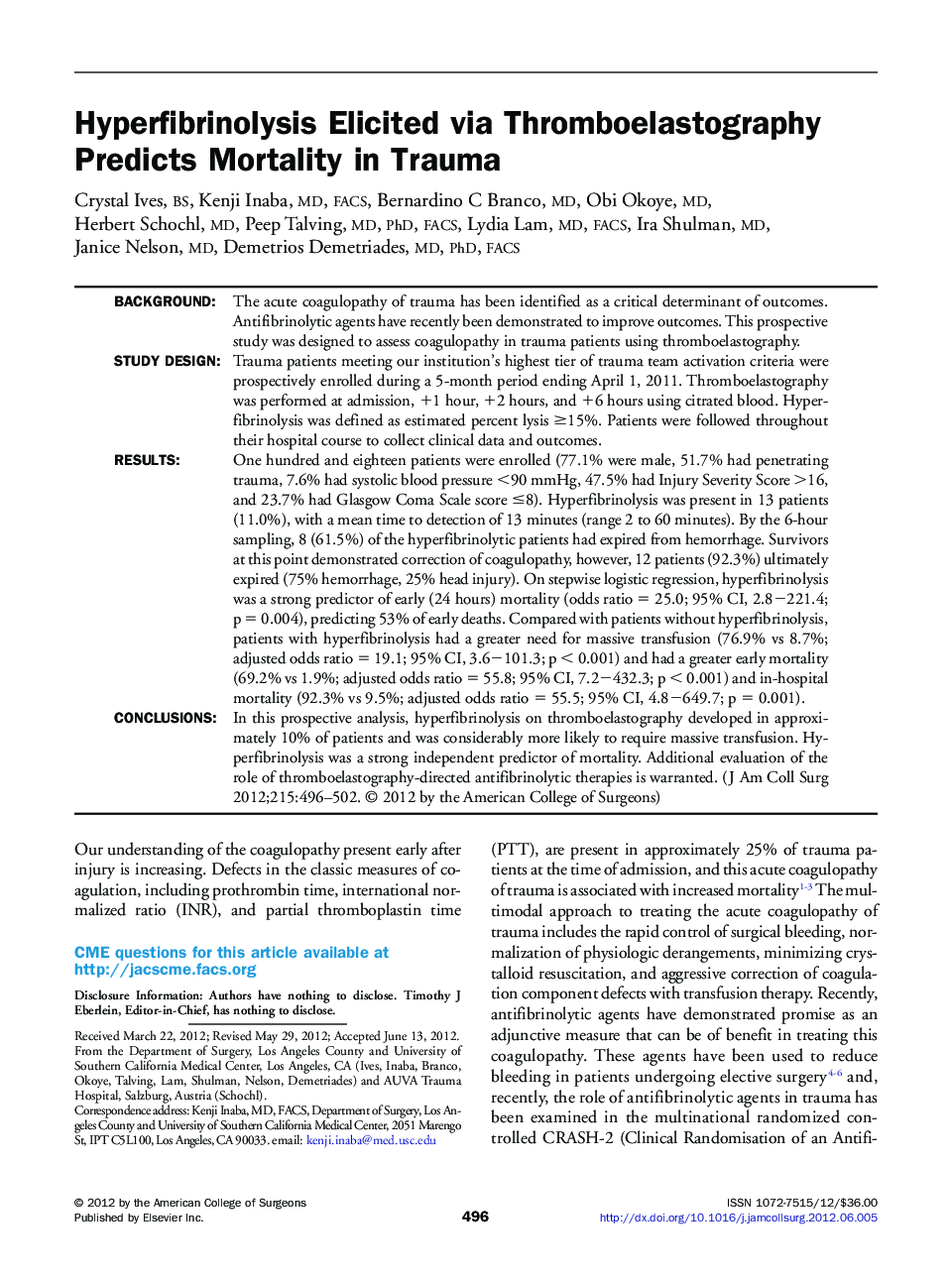| Article ID | Journal | Published Year | Pages | File Type |
|---|---|---|---|---|
| 4292364 | Journal of the American College of Surgeons | 2012 | 7 Pages |
BackgroundThe acute coagulopathy of trauma has been identified as a critical determinant of outcomes. Antifibrinolytic agents have recently been demonstrated to improve outcomes. This prospective study was designed to assess coagulopathy in trauma patients using thromboelastography.Study DesignTrauma patients meeting our institution's highest tier of trauma team activation criteria were prospectively enrolled during a 5-month period ending April 1, 2011. Thromboelastography was performed at admission, +1 hour, +2 hours, and +6 hours using citrated blood. Hyperfibrinolysis was defined as estimated percent lysis ≥15%. Patients were followed throughout their hospital course to collect clinical data and outcomes.ResultsOne hundred and eighteen patients were enrolled (77.1% were male, 51.7% had penetrating trauma, 7.6% had systolic blood pressure <90 mmHg, 47.5% had Injury Severity Score >16, and 23.7% had Glasgow Coma Scale score ≤8). Hyperfibrinolysis was present in 13 patients (11.0%), with a mean time to detection of 13 minutes (range 2 to 60 minutes). By the 6-hour sampling, 8 (61.5%) of the hyperfibrinolytic patients had expired from hemorrhage. Survivors at this point demonstrated correction of coagulopathy, however, 12 patients (92.3%) ultimately expired (75% hemorrhage, 25% head injury). On stepwise logistic regression, hyperfibrinolysis was a strong predictor of early (24 hours) mortality (odds ratio = 25.0; 95% CI, 2.8−221.4; p = 0.004), predicting 53% of early deaths. Compared with patients without hyperfibrinolysis, patients with hyperfibrinolysis had a greater need for massive transfusion (76.9% vs 8.7%; adjusted odds ratio = 19.1; 95% CI, 3.6−101.3; p < 0.001) and had a greater early mortality (69.2% vs 1.9%; adjusted odds ratio = 55.8; 95% CI, 7.2−432.3; p < 0.001) and in-hospital mortality (92.3% vs 9.5%; adjusted odds ratio = 55.5; 95% CI, 4.8−649.7; p = 0.001).ConclusionsIn this prospective analysis, hyperfibrinolysis on thromboelastography developed in approximately 10% of patients and was considerably more likely to require massive transfusion. Hyperfibrinolysis was a strong independent predictor of mortality. Additional evaluation of the role of thromboelastography-directed antifibrinolytic therapies is warranted.
